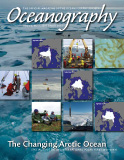Article Abstract
Observational data show that the Arctic Ocean has significantly and rapidly changed over the last few decades, which is unprecedented in the observational record. Air and water temperatures have increased, sea ice volume and extent have decreased, permafrost has thawed, storminess has increased, sea level has risen, coastal erosion has progressed, and biological processes have become more complex and diverse. In addition, there are socio-economic impacts of Arctic environmental change on Arctic residents and the world, associated with tourism, oil and gas exploration, navigation, military operations, trade, and industry. This paper discusses important results of the Arctic Ocean Model Intercomparison Project, which is advancing the role of numerical modeling in Arctic Ocean and sea ice research by stimulating national and international synergies for high-latitude research.

